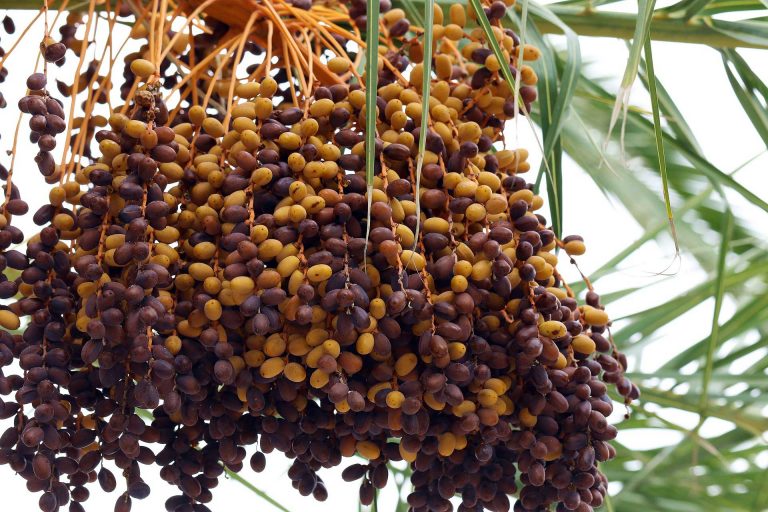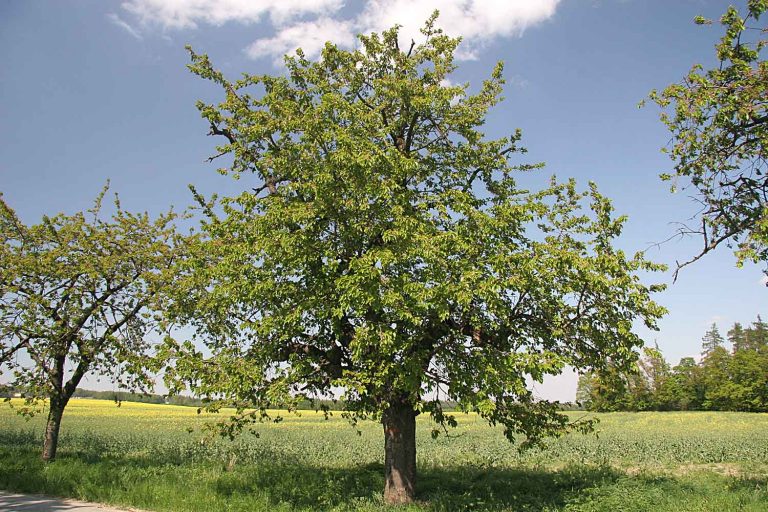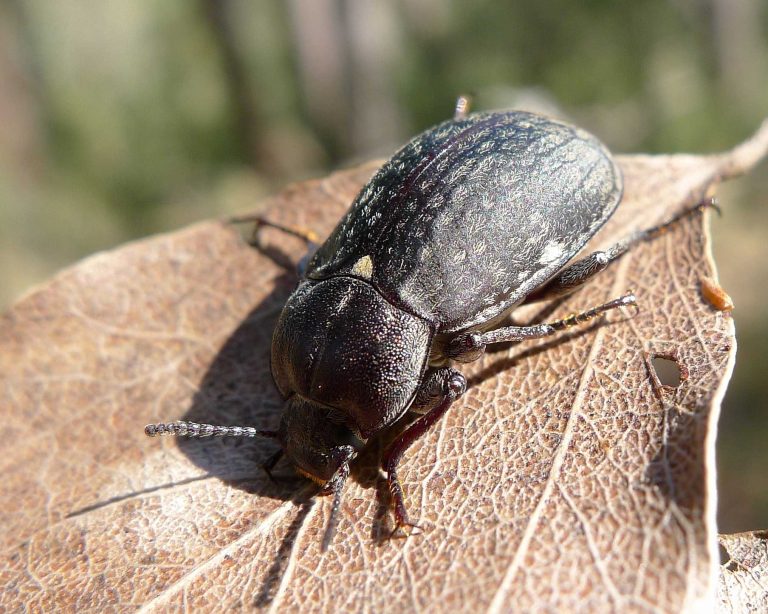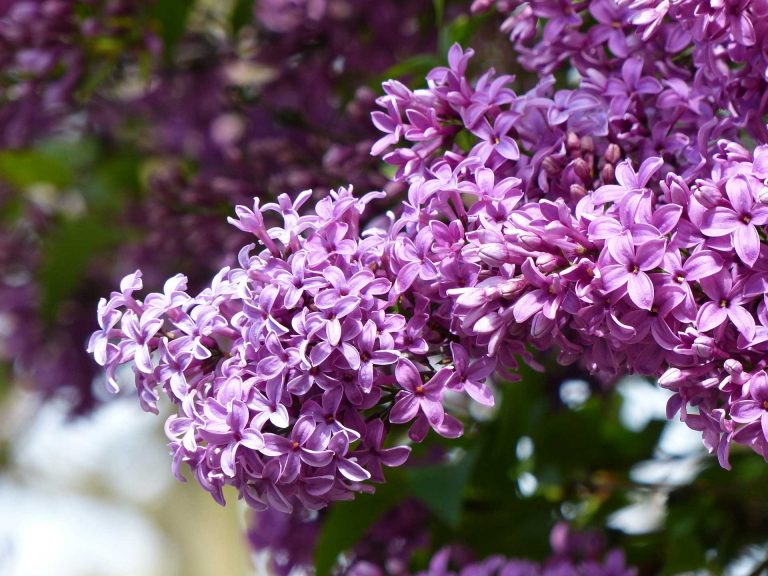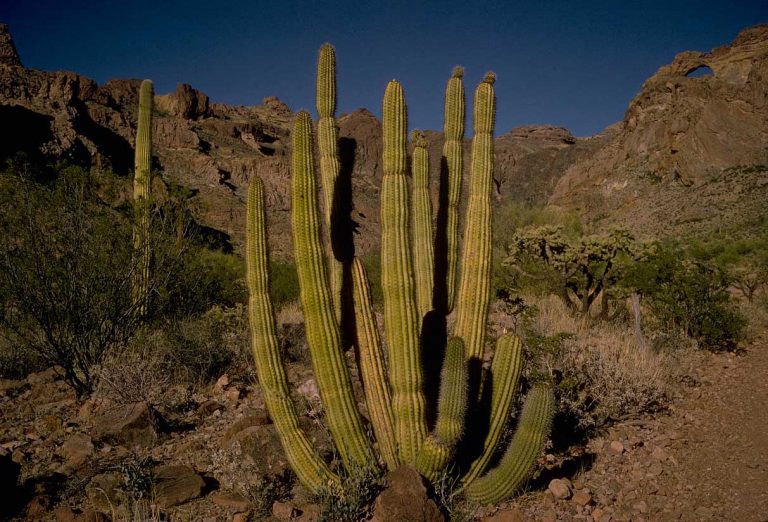Black Garden Ants
Scientific Classification
| Kingdom: | Animalia |
| Phylum: | Arthropoda |
| Class: | Insecta |
| Order: | Hymenoptera |
| Family: | Formicidae |
| Subfamily: | Formicinae |
| Genus: | Lasius |
| Species: | L. Niger |
| Binomial name: | Lasius niger |
The black garden ant whose scientific name is Lasius Niger is otherwise called in general, as a black ant, this is a Formicine ant, belonging to the sub-genus Lasius. We find them throughout Europe and in certain parts of Asia and North America. The European variety was divided into two types; L. Platythorax dwells in the forest regions, whereas the L. Niger type dwells in exposed areas. This ant is monogamous which means they have only one queen in a colony. Anatomy
In spite of the fact that these garden ants are named as black ants, it is also possible that they port a dark brown color and most of them grow to a length of 3 to 5 mm, Still, the queen can attain a length of 16mm.
- Workers – with a scientific name Lasius Niger, these workers are colored dark glossy black and are of length 3 to 5 mm. As the colony grows older over the generations, the workers grow bigger in size.
- Queens – The queen too is colored glossy black. However, in appearance, they have mild stripes colored brown on the abdomen. In the beginning the queen is small, but as it grows, it attains a length of 6 to 9 mm. When fertilized, the queen discards its wings and digests its muscles as food in the winter.
- Drones – Drones are born only from the queens. At the time when the nuptial flights draw near, they come out of their nests with a glossy dark body quite different in shape and appearance from the worker ants. They more or less look like wasps. Their wing muscles project from the body. They are 5 to 7 mm long and their wings are fragile.
- Immediately following mating, the queens settle on the ground, discard their wings and they are on the lookout for a proper location to hollow out a tunnel to start a colony. Meanwhile, the males normally survive just for 1 or 2 days following the nuptial flight and then die.
Behavior
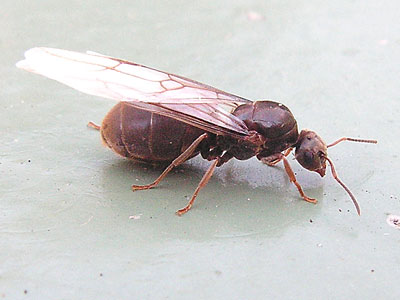
Black Garden Queen Ant – Photo by: Jens Buurgaard Nielsen
This Garden ant is lively and it moves with speed. On seeing human beings, they try to escape. Once the queen discards its wings, it moves quickly on the lookout for a damp site. Further, it digs a tunnel. On completion of the tunnel, the queen, then seals the entrance and settles at the bottom. Later she digs out a tiny compartment. This becomes the beginning compartment for the fresh colony. Normally the queen starts laying eggs, following the completion of the chamber. The eggs hatch after a period of 8 to 10 weeks. The Lasius Niger queen abstains from food, till the eggs hatch and the larva reaches maturity. They depend on the proteins they get from the wing muscles that are powdered and digested. In certain cases, a Lasius Niger queen consumes her own eggs for survival.
As its name implies, black garden ants love to live in the gardens: We often see them below the stones, payments and bricks. Besides; they construct nests in houses where the wood is rotten. It is learnt that the black garden ants build their nest in basement crevices and then enter the houses. In a colony of a black garden ant, you can find approximately 5.000 ants, and sometimes, this figure can cross the 15,000 mark.
Black garden ants usually survey their environment extensively in the early months of summer, both for the purpose of accumulating the food for the queen and her juveniles and also for preparing for the nest’s summer flight.
Habitat
We find the Black garden ants in several places inclusive of Asia, Africa, North America, Europe, United Kingdom, Russia and Wales.
Food
Black garden ants like sweetened foods like ripe fruits, In addition, they consume honeydew prepared by aphids. They also draw honeydew from consuming insects such as white flies, mealy bugs and plant hoppers.
For Black garden ants, Planthoppers, is the right honeydew source. The Black garden ants conduct vigorous explorations for any food products, particularly sweet or greasy products indoors. . In addition, it consumes dead or live insects. This Black garden ant is not only a day and night forager, but also a scavenger.
Reproduction
Mating of the ants takes place in flight. Hence “flying ants” are under- developed queens and males. Nuptial flight/mating of the Lasius Niger normally takes place during June to September for all species. In North America. Normally, flights take place during the autumn season, But in Europe mating normally occurs in the summer, when it is hot, during July and August. On a flight thousands of winged females and males meet together.

Having discovered a fondness for insects while pursuing her degree in Biology, Randi Jones was quite bugged to know that people usually dismissed these little creatures as “creepy-crawlies”.



